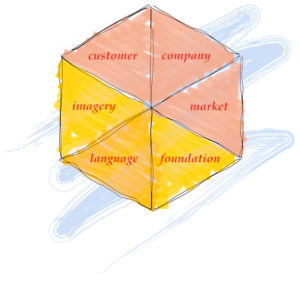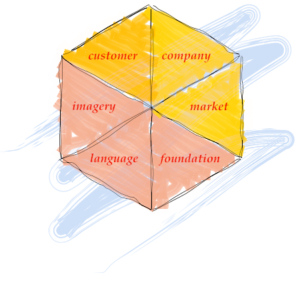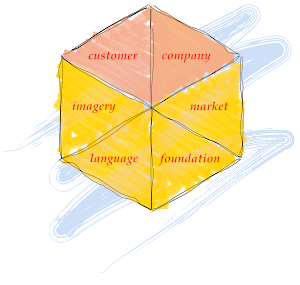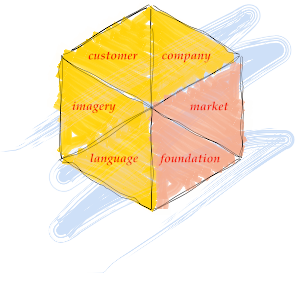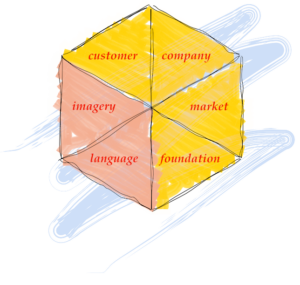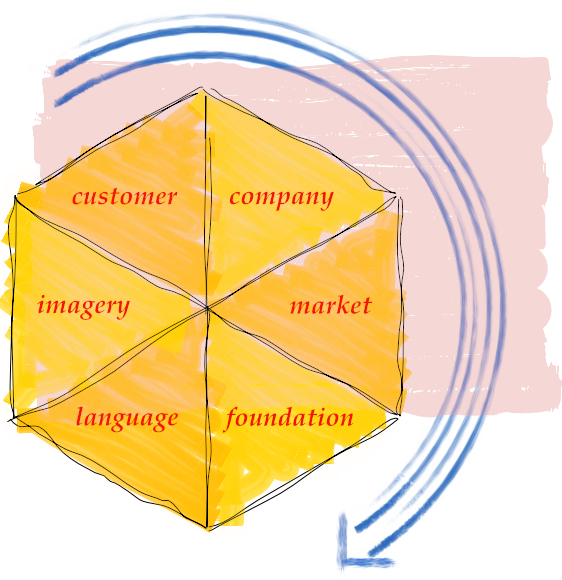
Hexagonal brandingTM is the structured approach I use to develop brand identities for my clients, based on my experience in developing brands in agency and client settings. It’s comprised of six components, each of which has three elements. Visually, you can think of a set of elements as forming a triangle for each component. The six triangles come together to form a hexagon. The components and their elements that comprise the system are:
Please contact me to discuss how Hexagonal Branding can develop the identity of your healthcare business.
| The Customer – Personas – Decision-making process – Where they buy | The Company – Products – Mission, Vision, Values – Objectives and goals | The Marketplace – Current state of the market – Competition – Future trends |
|---|---|---|
| The Brand Foundation – Features – Customer benefits – The Customer’s emotional rewards | The Brand Language – Personality/Archetype – Brand positioning – Elevator statement (distillation of positioning) | The Visual Brand – Visual personality – fonts, colors, imagery – Logo, social icons – Graphic standards |
Each of the six components has a major part to play in how the brand identity is built and manifested in communication. Each element of the components represents either information to be gathered and digested or a part of the overall brand that needs defining.
- Customer – a current or prospective user of the product
- Company – parent company of the brand
- Product – a physical product or a service with specific benefits for a defined target market
- Brand – From the company’s perspective, the set of signifiers or messages conveyed about itself. From the customer’s perspective, what they think about the company and its products.
Laying out the six components in a hexagon helps visualize the relationships between each. The first component is the customer, the person who holds the perception of a brand and is the key to the success or failure of a product. The customer has a need which the brand could potentially fulfill, as could the brand’s competitors.
Moving clockwise around the hexagon, the next component is the company, then the marketplace in which the company competes. The company relates to the customer it is trying to attract and the marketplace in which it operates through tangible goods and services as well as intangibles, such as the company’s mission and values. Understanding of the marketplace includes competitive intelligence and knowledge of trends.
Careful analysis of your customer, your product’s strengths and weaknesses, and the dynamics of the marketplace result in the brand foundation, in which the benefits to the customer and the emotional rewards they receive from using your product are articulated.
A meaningful company brand identity results when all Elements and Components are fully developed.
Analogous Components
First analogous combination: These are the who-what-where components.
Second analogous combination: These are the brand signifiers for the first combination.
Brand Foundation – Brand Language – The Visual Brand
The brand’s benefits and rewards, and how they are expressed verbally, in writing, and visually.
First plane – the Customer and the Company
What the company produces and stands for in relation to how the customer views the brand. The dynamic is one of alignment; how well does the brand meet the expectations and reflect the values of the customer?
Second plane – the Marketplace and the Brand Foundation
The brand’s features and benefits in relation to the current and future market and the available alternatives.
Third plane – Brand Language and the Visual Brand
The totality of how the brand communicates; the expression of the brand identity in all modes of communication.

